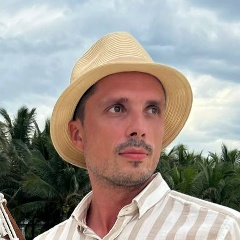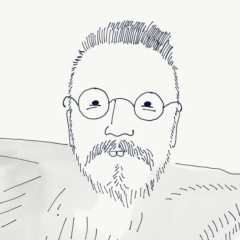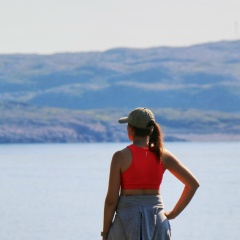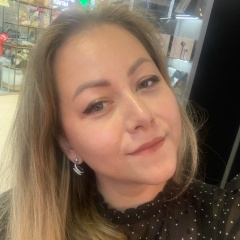#художественные_промыслы_России
90 лет назад основаны Палехские художественные мастерские
5 декабря 1924 года семь бывших художников-иконописцев: Голиков, Баканов, Маркичев, братья Зубковы, и братья Котухины образуют в Палехе «Артель древней живописи».
Постановлением ЦК ВКП(б) от 23 апреля 1932 «О перестройке литературно-художественных организаций» происходит реконструкция художественных организаций — распущены мелкие объединения и создан единый Союз художников СССР (СХ СССР) — творческий союз, который, объединял советских художников и искусствоведов. Ведущие палехские мастера становятся членами СХ.
В 1933 году «Артель древней живописи» преобразуется в ТПО «Товарищество Палех» и вступает во Всероссийский кооперативный союз работников изобразительных искусств («Всекохудожник»).
В июле 1953 года «Всекохудожник» ликвидирован, его функции переданы Художественному Фонду СССР, созданному при СХ СССР для осуществления заказов государственных и кооперативных организаций и учреждений на создание произведений изобразительного искусства, а также оформление выставок, общественных зданий и др.
В 1954 году регистрируется Палехское отделение Союза художников России — единственное Отделение СХ в СССР, работающее в сельской местности. Художественно-производственный коллектив растёт. На средства Художественного Фонда РСФСР в 1957—58 годах к старинному 2-х этажному зданию, постройки 1907 года, пристраивается новое, площадью 1995 кв. м.
31 марта 1958 года приказом по Художественному Фонду РСФСР творческо-производственная организация «Товарищество Палех» реорганизуется в Палехские художественно-производственные мастерские Художественного Фонда РСФСР.
В 1971 году мастерские награждаются Орденом «Знак Почёта».
Основным заказчиком являются госструктуры — «Новоэкспорт» заключает договора с иностранными фирмами за рубежом, «Росинвалютторг» осуществляет торговлю на валюту внутри страны. Более 90% продаж осуществлялось за границу.
В 70–80-х годах Палехские художественно-производственные мастерские становятся самой успешной организацией во всей системе Союза художников России. Имеют стабильное финансовое положение.
По решению Правительства начинается строительство нового здания, рассчитанного на 300 художников. За проект боролось 17 архитектурных институтов. Выиграл проект Льва Павловича Катаева. Посмотреть, как идёт строительство, приезжает Председатель Совета Министров СССР А. Н. Косыгин.
Так же на средства Художественного Фонда РСФСР для работников мастерских строятся многоквартирные жилые дома.
Мастерские оснащаются собственным современным здравпунктом, обширным автопарком, что по тем временам является исключительным для предприятий сельской местности.
С началом «Перестройки» государство перестаёт поддерживать художественный Палех. Замораживается строительство нового здания мастерских. Не выполняются социальные обязательства. На фоне этого в творческом коллективе зреет раскол между последователями строгой традиции коллективного творчества и сторонниками индивидуализма.
К концу 80-х, началу 90-х сменяющие друг друга Правления Палехской организации Союза художников пытаются найти новые формы управления, упраздняют должность директора, ликвидируют профсоюзную очередь на жильё, выживают художников из организации, а в 1993 году, оставшись в меньшинстве и вовсе сами себя (Правление ПО СХР) низлагают и распускают Палехское отделение Союза художников России. В результате вся материальная база ПО СХР оказывается в руках коммерческой организации, не имеющей отношения к структуре СХР.
Члены СХ, оказавшееся в большинстве «за бортом» организации, не соглашаются с роспуском Палехского отделения Союза художников России, и летом 1994 года Общим собранием выбирают новое Правление.
В декабре 1995 года Областной суд признаёт передачу имущества и материальной базы СХР коммерческой организации незаконным, и начинается долгая тяжба по его возвращению, продолжающаяся до сих пор.
90 лет назад основаны Палехские художественные мастерские
5 декабря 1924 года семь бывших художников-иконописцев: Голиков, Баканов, Маркичев, братья Зубковы, и братья Котухины образуют в Палехе «Артель древней живописи».
Постановлением ЦК ВКП(б) от 23 апреля 1932 «О перестройке литературно-художественных организаций» происходит реконструкция художественных организаций — распущены мелкие объединения и создан единый Союз художников СССР (СХ СССР) — творческий союз, который, объединял советских художников и искусствоведов. Ведущие палехские мастера становятся членами СХ.
В 1933 году «Артель древней живописи» преобразуется в ТПО «Товарищество Палех» и вступает во Всероссийский кооперативный союз работников изобразительных искусств («Всекохудожник»).
В июле 1953 года «Всекохудожник» ликвидирован, его функции переданы Художественному Фонду СССР, созданному при СХ СССР для осуществления заказов государственных и кооперативных организаций и учреждений на создание произведений изобразительного искусства, а также оформление выставок, общественных зданий и др.
В 1954 году регистрируется Палехское отделение Союза художников России — единственное Отделение СХ в СССР, работающее в сельской местности. Художественно-производственный коллектив растёт. На средства Художественного Фонда РСФСР в 1957—58 годах к старинному 2-х этажному зданию, постройки 1907 года, пристраивается новое, площадью 1995 кв. м.
31 марта 1958 года приказом по Художественному Фонду РСФСР творческо-производственная организация «Товарищество Палех» реорганизуется в Палехские художественно-производственные мастерские Художественного Фонда РСФСР.
В 1971 году мастерские награждаются Орденом «Знак Почёта».
Основным заказчиком являются госструктуры — «Новоэкспорт» заключает договора с иностранными фирмами за рубежом, «Росинвалютторг» осуществляет торговлю на валюту внутри страны. Более 90% продаж осуществлялось за границу.
В 70–80-х годах Палехские художественно-производственные мастерские становятся самой успешной организацией во всей системе Союза художников России. Имеют стабильное финансовое положение.
По решению Правительства начинается строительство нового здания, рассчитанного на 300 художников. За проект боролось 17 архитектурных институтов. Выиграл проект Льва Павловича Катаева. Посмотреть, как идёт строительство, приезжает Председатель Совета Министров СССР А. Н. Косыгин.
Так же на средства Художественного Фонда РСФСР для работников мастерских строятся многоквартирные жилые дома.
Мастерские оснащаются собственным современным здравпунктом, обширным автопарком, что по тем временам является исключительным для предприятий сельской местности.
С началом «Перестройки» государство перестаёт поддерживать художественный Палех. Замораживается строительство нового здания мастерских. Не выполняются социальные обязательства. На фоне этого в творческом коллективе зреет раскол между последователями строгой традиции коллективного творчества и сторонниками индивидуализма.
К концу 80-х, началу 90-х сменяющие друг друга Правления Палехской организации Союза художников пытаются найти новые формы управления, упраздняют должность директора, ликвидируют профсоюзную очередь на жильё, выживают художников из организации, а в 1993 году, оставшись в меньшинстве и вовсе сами себя (Правление ПО СХР) низлагают и распускают Палехское отделение Союза художников России. В результате вся материальная база ПО СХР оказывается в руках коммерческой организации, не имеющей отношения к структуре СХР.
Члены СХ, оказавшееся в большинстве «за бортом» организации, не соглашаются с роспуском Палехского отделения Союза художников России, и летом 1994 года Общим собранием выбирают новое Правление.
В декабре 1995 года Областной суд признаёт передачу имущества и материальной базы СХР коммерческой организации незаконным, и начинается долгая тяжба по его возвращению, продолжающаяся до сих пор.
# artistic_of_Russia
90 years ago Palekh art workshops were founded.
On December 5, 1924, seven former icon painters: Golikov, Bakanov, Markichev, the Zubkov brothers, and the Kotukhin brothers form the “Artel of ancient painting” in Palekh.
Resolution of the Central Committee of the CPSU (b) of April 23, 1932 "On the restructuring of literary and artistic organizations" is the reconstruction of artistic organizations - small associations were dissolved and a single Union of Artists of the USSR (CX USSR) was created - a creative union that united Soviet artists and art historians. Leading Palekh masters become members of the SC.
In 1933, the “Artel of ancient painting” was transformed into the TPO “The Association of Palekh” and entered the All-Russian Cooperative Union of Fine Arts Workers (“All-Artist”).
In July 1953, the “All-Artist” was eliminated, its functions were transferred to the Artistic Foundation of the USSR, created under the USSR Artists' Union for the implementation of orders by state and cooperative organizations and institutions for the creation of works of fine art, as well as the design of exhibitions, public buildings, etc.
In 1954, the Palekh branch of the Union of Artists of Russia was registered - the only CX branch in the USSR operating in rural areas. The art production team is growing. The funds of the Art Fund of the RSFSR in 1957–58 to the old 2-storey building, built in 1907, build a new one, with an area of 1995 square meters. m
March 31, 1958 order for the Art Fund of the RSFSR creative production organization "Association of Palekh" reorganized into the Palekh art production workshops of the Art Fund of the RSFSR.
In 1971, workshops are awarded the Order of the Badge of Honor.
The main customer is the state structures - Novoexport signs contracts with foreign companies abroad, Rosinvaluttorg trades for foreign currency inside the country. More than 90% of sales were carried out abroad.
In the 1970s and 1980s, the Palekh art-production workshops became the most successful organization in the entire system of the Union of Artists of Russia. Have a stable financial position.
By decision of the Government, construction of a new building for 300 artists begins. For the project struggled 17 architectural institutes. Won the project of Lev Pavlovich Kataev. To see how the construction is going, the Chairman of the Council of Ministers of the USSR, AN Kosygin arrives.
Also, at the expense of the Art Fund of the RSFSR, apartment buildings are being built for the workers of the workshops.
The workshops are equipped with their own modern health center, an extensive fleet of vehicles, which in those times is exceptional for rural enterprises.
With the beginning of “Perestroika”, the state ceases to support artistic Palekh. The construction of a new workshop building is frozen. Social obligations are not fulfilled. Against this background, a rift between the followers of the strict tradition of collective creativity and supporters of individualism is ripening in the creative team.
By the end of the 80s, the beginning of the 90s, the successive Board of the Palekh organization of the Union of Artists is trying to find new forms of management, abolish the director position, eliminate the union line for housing, survive the artists from the organization, and in 1993, remaining in the minority themselves (Board of CXR) degrade and dissolve the Palekh branch of the Union of Artists of Russia. As a result, the entire material base of the CXR software is in the hands of a commercial organization that is not related to the structure of the CXP.
The members of the CX, which turned out to be in the majority of "overboard" organizations, do not agree with the dissolution of the Palekh branch of the Union of Artists of Russia, and in the summer of 1994 the General Assembly elects a new Board.
In December 1995, the Regional Court recognized the transfer of property and material base of a CXP to a commercial organization as illegal, and a long dispute on its return, continuing to this day, begins.
90 years ago Palekh art workshops were founded.
On December 5, 1924, seven former icon painters: Golikov, Bakanov, Markichev, the Zubkov brothers, and the Kotukhin brothers form the “Artel of ancient painting” in Palekh.
Resolution of the Central Committee of the CPSU (b) of April 23, 1932 "On the restructuring of literary and artistic organizations" is the reconstruction of artistic organizations - small associations were dissolved and a single Union of Artists of the USSR (CX USSR) was created - a creative union that united Soviet artists and art historians. Leading Palekh masters become members of the SC.
In 1933, the “Artel of ancient painting” was transformed into the TPO “The Association of Palekh” and entered the All-Russian Cooperative Union of Fine Arts Workers (“All-Artist”).
In July 1953, the “All-Artist” was eliminated, its functions were transferred to the Artistic Foundation of the USSR, created under the USSR Artists' Union for the implementation of orders by state and cooperative organizations and institutions for the creation of works of fine art, as well as the design of exhibitions, public buildings, etc.
In 1954, the Palekh branch of the Union of Artists of Russia was registered - the only CX branch in the USSR operating in rural areas. The art production team is growing. The funds of the Art Fund of the RSFSR in 1957–58 to the old 2-storey building, built in 1907, build a new one, with an area of 1995 square meters. m
March 31, 1958 order for the Art Fund of the RSFSR creative production organization "Association of Palekh" reorganized into the Palekh art production workshops of the Art Fund of the RSFSR.
In 1971, workshops are awarded the Order of the Badge of Honor.
The main customer is the state structures - Novoexport signs contracts with foreign companies abroad, Rosinvaluttorg trades for foreign currency inside the country. More than 90% of sales were carried out abroad.
In the 1970s and 1980s, the Palekh art-production workshops became the most successful organization in the entire system of the Union of Artists of Russia. Have a stable financial position.
By decision of the Government, construction of a new building for 300 artists begins. For the project struggled 17 architectural institutes. Won the project of Lev Pavlovich Kataev. To see how the construction is going, the Chairman of the Council of Ministers of the USSR, AN Kosygin arrives.
Also, at the expense of the Art Fund of the RSFSR, apartment buildings are being built for the workers of the workshops.
The workshops are equipped with their own modern health center, an extensive fleet of vehicles, which in those times is exceptional for rural enterprises.
With the beginning of “Perestroika”, the state ceases to support artistic Palekh. The construction of a new workshop building is frozen. Social obligations are not fulfilled. Against this background, a rift between the followers of the strict tradition of collective creativity and supporters of individualism is ripening in the creative team.
By the end of the 80s, the beginning of the 90s, the successive Board of the Palekh organization of the Union of Artists is trying to find new forms of management, abolish the director position, eliminate the union line for housing, survive the artists from the organization, and in 1993, remaining in the minority themselves (Board of CXR) degrade and dissolve the Palekh branch of the Union of Artists of Russia. As a result, the entire material base of the CXR software is in the hands of a commercial organization that is not related to the structure of the CXP.
The members of the CX, which turned out to be in the majority of "overboard" organizations, do not agree with the dissolution of the Palekh branch of the Union of Artists of Russia, and in the summer of 1994 the General Assembly elects a new Board.
In December 1995, the Regional Court recognized the transfer of property and material base of a CXP to a commercial organization as illegal, and a long dispute on its return, continuing to this day, begins.




У записи 3 лайков,
1 репостов.
1 репостов.
Эту запись оставил(а) на своей стене Максим Петров
























